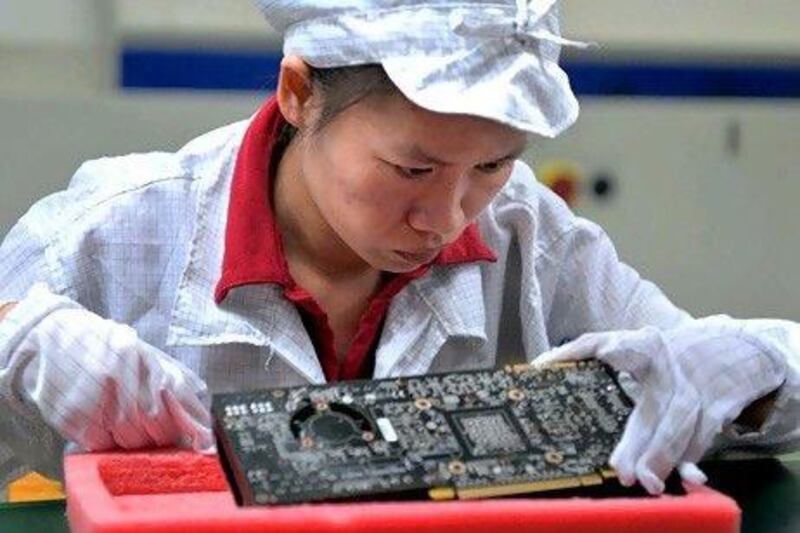We would hate to scratch or dent our shiny new smartphone or tablet, let alone take it to bits.
But a group of gadget geeks specialises in doing just that. During so-called "teardowns", they rip open devices, strip out their parts and scrutinise every element within.
Some just want to give consumers a behind-the-scenes look at how the products are made and happily share their findings in videos posted online. Others work to confirm, or sometimes deny, what components are rumoured to be in use by big brands or how to fix gadgets.
"The problem is that most people view consumer electronics as black boxes," says Miro Djuric, the chief information architect for iFixit.com, which provides visual teardowns of videogame consoles, mobiles and cameras so consumers can repair their gadgets themselves.
"This fear, as well as our drive to show folks that 'hey, there's some interesting stuff inside', led to the start of teardowns."
Once these techies put down their screwdrivers and pliers, they often see names of parts suppliers that include Avago, Chimei, STMicroelectronics, TPK and Wintek.
In other words, names you have probably never heard before.
Yet collectively, these businesses and other makers of electronic components amassed US$137.6 billion (Dh505.43bn) in revenue last year, according to market data from BCC Research. And this sector, which is fuelled by suppliers based in Asia, is expected to grow by about 9.7 per cent annually during the next five years, to $229.8bn by 2017, as more technology companies produce a wider array of devices.
"Technological advances are being made at a rapid rate," notes Srinivasa Rajaram, who authored the report for BCC Research. "With new software continually being introduced, compatible systems to run the software are required, which leads to innovation in new processors and other system components."
Google, for one, plans to work with component-manufacturing partners in the production of more high-end smartphones but also cheaper mobiles for cost-conscious consumers. The internet search giant is also planning to unveil more devices that use its Chrome Web browser.
"[By] year-end, quite a few Chrome devices are coming out," says Obi Felten, the director of consumer marketing for Google in Europe, the Middle East and Africa.
To make and keep these new gadgets operating, manufacturers need plenty of parts.
The mobile phone maker Nokia turned to a company called Micron Technology for its 16 gigabyte flash memory storage devices. The component can be found in the Nokia Lumia 900 mobile, and is estimated to have cost Nokia $27 in each of its handsets, according to a teardown analysis by IHS iSuppli.
Micron may not be a household name, although the business has been running for more than three decades while working on memory and semiconductor technologies. Less than three years ago, the company, based in the United States, voluntarily transferred its public listing from the New York Stock Exchange to the Nasdaq Global Select Market.
From Asia, companies such as TPK and Wintek supply touchscreen technologies for makers of mobile phones and tablet computers. TPK has grown large enough since being established in 2003 that it listed on the Taiwan Stock Exchange two years ago.
Wintek, meanwhile, has reported that its sales for last month totalled New Taiwan $9.29bn (Dh1.15bn), up from NT$6.82bn in the same month last year.
If the revenue from electronic components seems like easy money left on the table by the gadget manufacturers that end up paying others to make those components, think again.
"It would be prohibitively expensive for even the largest electronics manufacturers to build and develop all of these individual components, and so they rely on outside sources for them," says Mr Djuric.
To be sure, some of the names hidden on fine print within today's most popular devices are already quite familiar among consumers. What may surprise individuals, however, is that fierce rivals sometimes work together on manufacturing a product.
For instance, the chief executives of Samsung and Apple met this week during settlement talks that were mandated by a judge and meant to help the companies deal with patent-infringement disputes.
Yet, when Apple wanted a specific kind of display for its latest iPad - a 2,048x1,536-pixel screen that measured 9.7 inches - it turned to none other than Samsung to provide it, says Mr Djuric.
Andrew Rassweiler, the senior principal analyst for teardown services at IHS iSuppli, also says Samsung sold Apple its latest display technology.
He adds that Samsung also provided Apple with memory capacity, and perhaps even the battery for the newest iPad. "If this turns out to be the case, Samsung will account for nearly 50 per cent of the new iPad's BOM [bill of materials]," notes Mr Rassweiler. "Among all component suppliers, Samsung Electronics continues its reign as the big winner in the individual iPad."
twitter: Follow and share our breaking business news. Follow us
iPad users can follow our twitterfeed via Flipboard - just search for Ind_Insights on the app.





